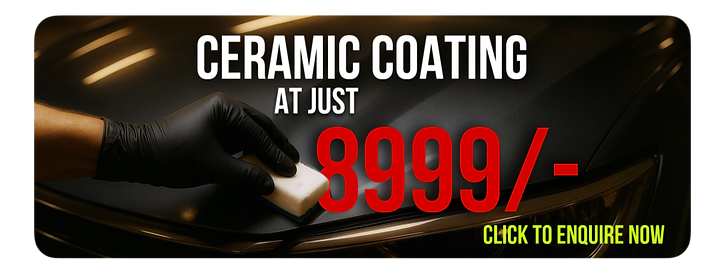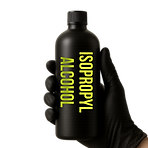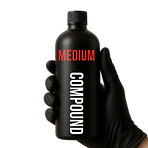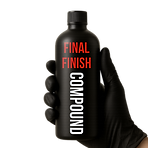CERAMIC & GRAPHENE COATING

What is Ceramic Coating?
Ceramic coating is a liquid polymer applied to the exterior of a vehicle. Once cured, it forms a durable, hydrophobic (water-repelling) layer that bonds with your car’s paint. Think of it as a glass-like shield that protects your vehicle from the external elements.
Microscopic view of Coating
When ceramic coating is applied to your car’s surface, tiny nanoparticles of silicon dioxide (SiO₂) or titanium dioxide (TiO₂) settle into the microscopic pores and imperfections in the paint.
Once it cures, the coating forms an ultra-thin, invisible crystalline layer — like liquid glass — that bonds chemically with the paint. This bond is stronger than wax or sealants, creating a *permanent layer of protection (with proper maintenance).

Companies that we offer

BEFORE COATING
AFTER COATING


Why is Ceramic or Graphene Coating Required
1. To Protect Paint from Damage
Your car's paint faces daily enemies:
-
UV rays (causes fading and oxidation)
-
Bird droppings (acidic and corrosive)
-
Tree sap, road salt, bug splatter
-
Water spots and chemicals
Without protection, paint deteriorates fast.
Ceramic and graphene coatings form a strong barrier against all these threats.
2. To Make Cleaning Easier
-
Both coatings offer hydrophobic (water-repelling) properties.
-
Dirt, mud, and grime slide off the slick surface.
-
You spend less time and money on washing.
3. To Enhance Appearance
-
Coatings give a deep, glossy finish that lasts for years.
-
Paint looks richer, deeper, and more reflective — like a wet-look shine.
Ceramic or Graphene Coating?
- Ceramic coating is based on a material called SiO2 .i.e. Silicon dioxide
- Graphene on the other hand is Reduced Graphene Oxide
What's the difference?
Graphene offers more Hydrophobicity, better gloss and better protection.

Steps in Coating your Car


Foam Wash


Final Polisher


Compounding


Isopropyl Alcohol


Compounding


Coating


Compounding
Buff off



